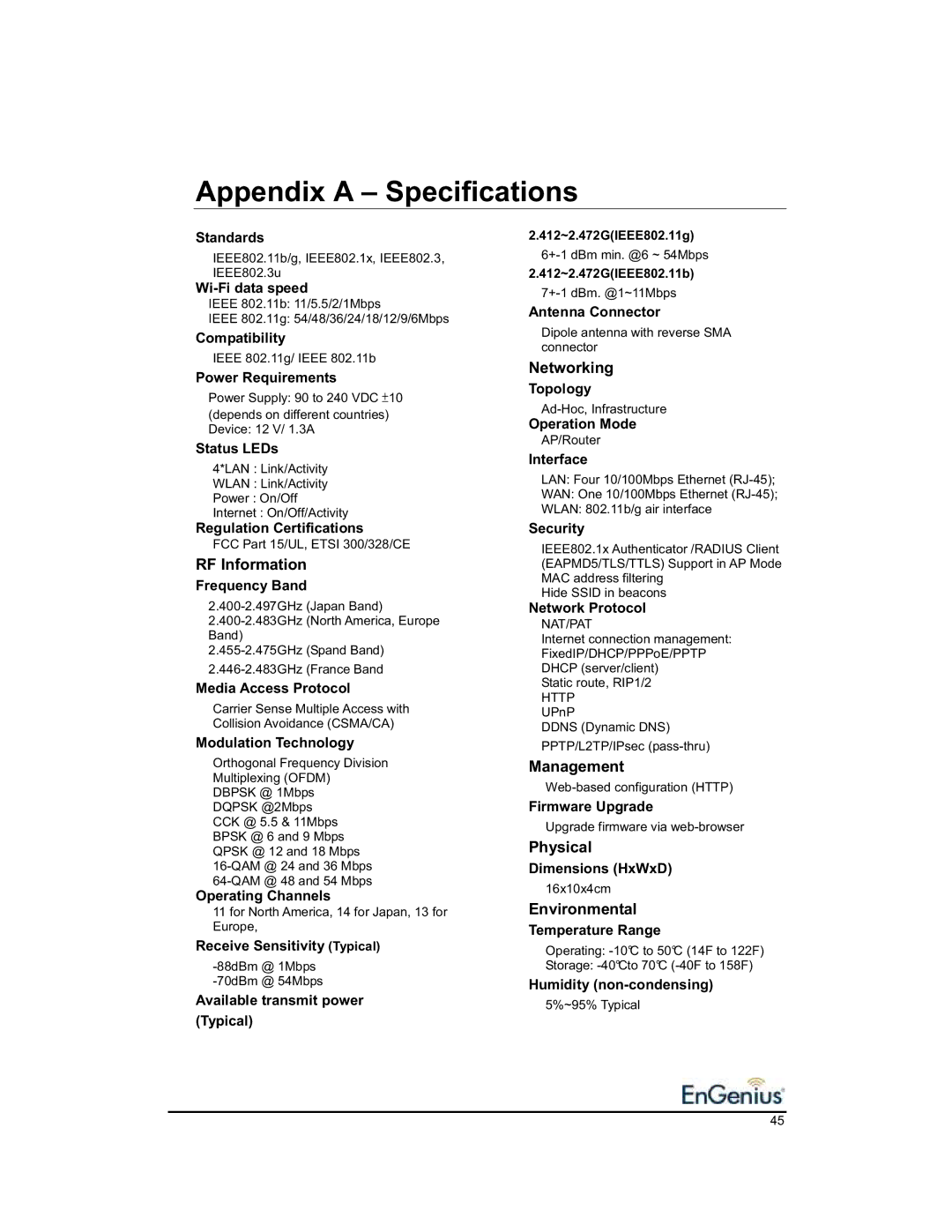
Appendix A – Specifications
Standards
IEEE802.11b/g, IEEE802.1x, IEEE802.3, IEEE802.3u
IEEE 802.11b: 11/5.5/2/1Mbps
IEEE 802.11g: 54/48/36/24/18/12/9/6Mbps
Compatibility
IEEE 802.11g/ IEEE 802.11b
Power Requirements
Power Supply: 90 to 240 VDC 10 (depends on different countries) Device: 12 V/ 1.3A
Status LEDs
4*LAN : Link/Activity
WLAN : Link/Activity
Power : On/Off
Internet : On/Off/Activity
Regulation Certifications
FCC Part 15/UL, ETSI 300/328/CE
RF Information
Frequency Band
Band)
Media Access Protocol
Carrier Sense Multiple Access with Collision Avoidance (CSMA/CA)
Modulation Technology
Orthogonal Frequency Division Multiplexing (OFDM)
DBPSK @ 1Mbps DQPSK @2Mbps CCK @ 5.5 & 11Mbps BPSK @ 6 and 9 Mbps QPSK @ 12 and 18 Mbps
Operating Channels
11 for North America, 14 for Japan, 13 for Europe,
Receive Sensitivity (Typical)
Available transmit power
(Typical)
2.412~2.472G(IEEE802.11g)
2.412~2.472G(IEEE802.11b)
Antenna Connector
Dipole antenna with reverse SMA connector
Networking
Topology
Operation Mode
AP/Router
Interface
LAN: Four 10/100Mbps Ethernet
WAN: One 10/100Mbps Ethernet
WLAN: 802.11b/g air interface
Security
IEEE802.1x Authenticator /RADIUS Client (EAPMD5/TLS/TTLS) Support in AP Mode MAC address filtering
Hide SSID in beacons
Network Protocol
NAT/PAT
Internet connection management: FixedIP/DHCP/PPPoE/PPTP DHCP (server/client)
Static route, RIP1/2
HTTP
UPnP
DDNS (Dynamic DNS)
PPTP/L2TP/IPsec
Management
Firmware Upgrade
Upgrade firmware via
Physical
Dimensions (HxWxD)
16x10x4cm
Environmental
Temperature Range
Operating:
Storage:
Humidity
5%~95% Typical
45
